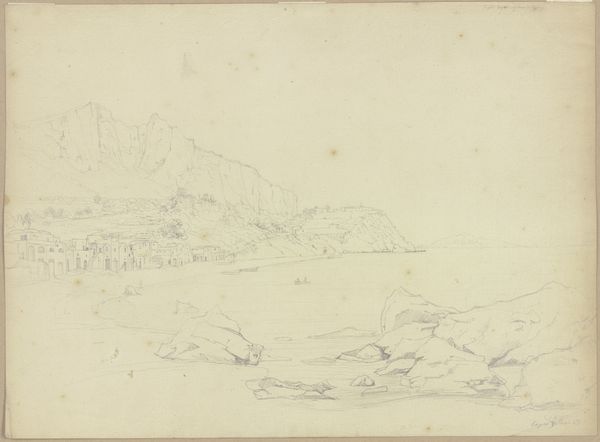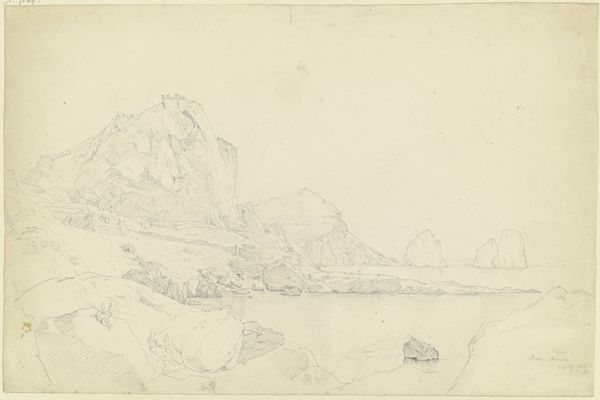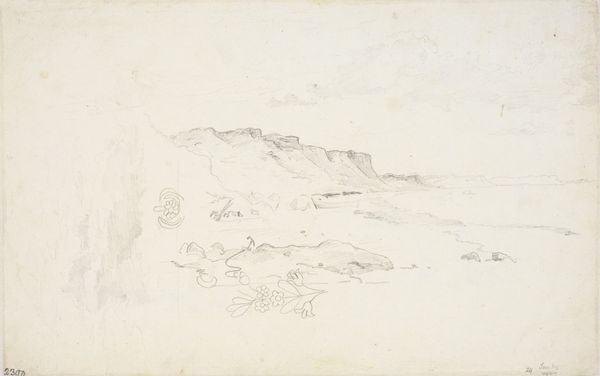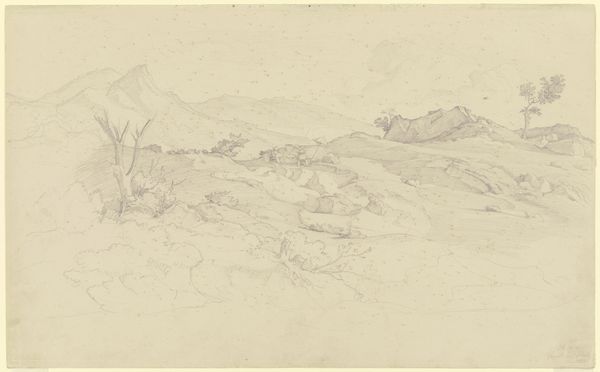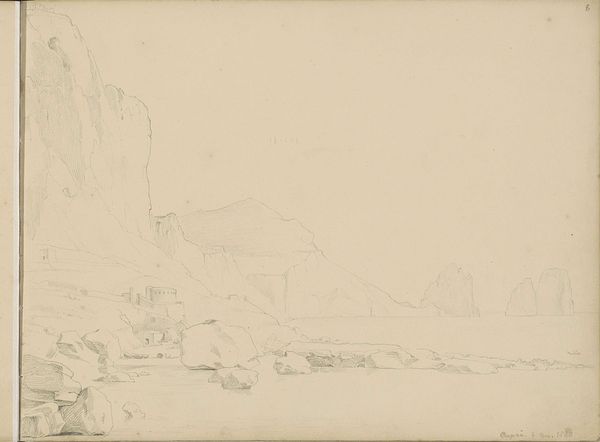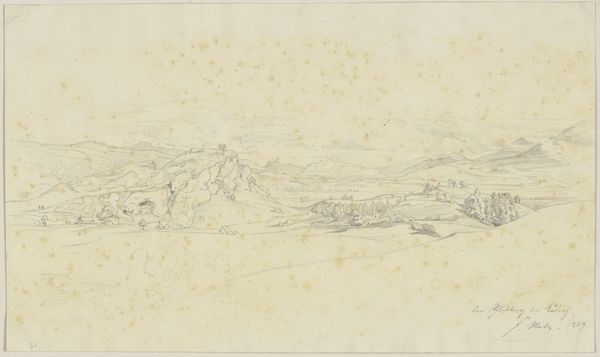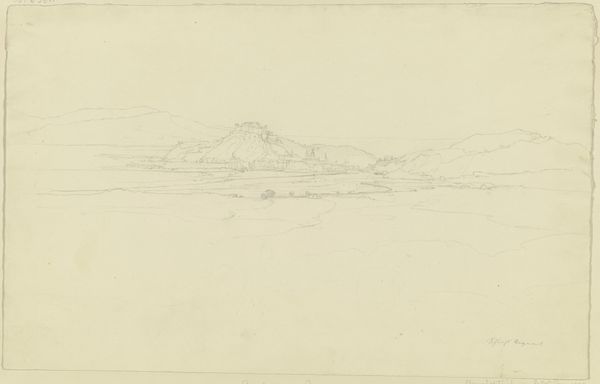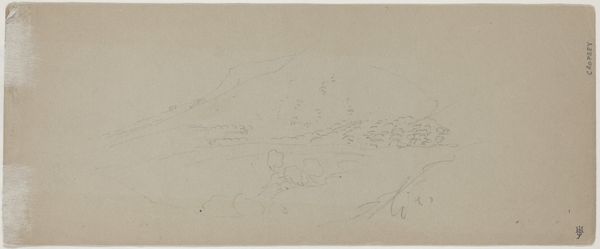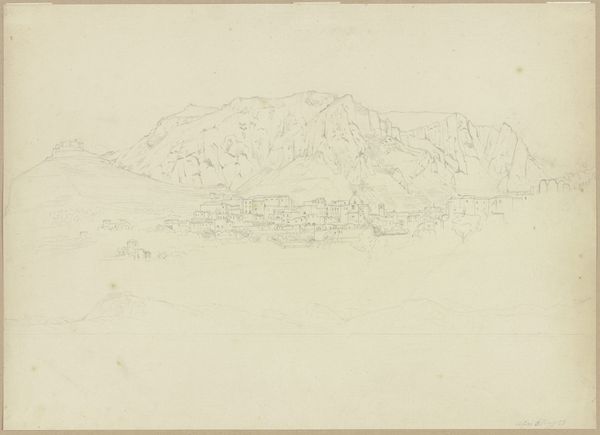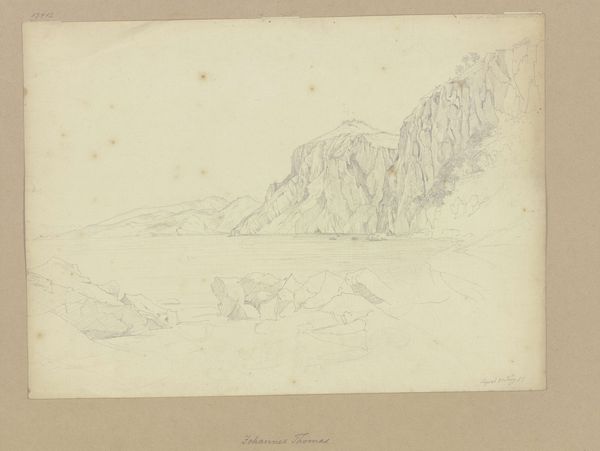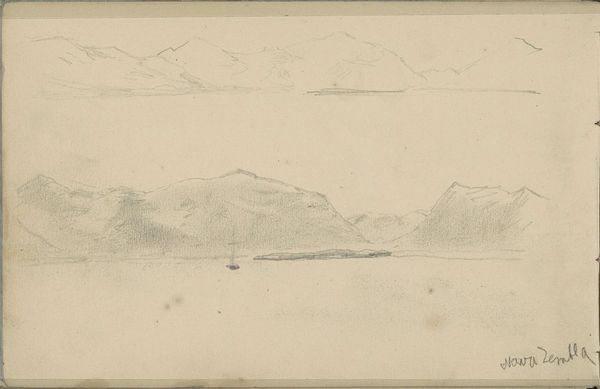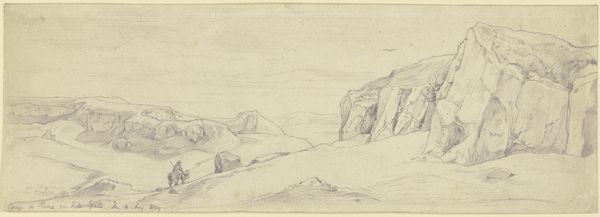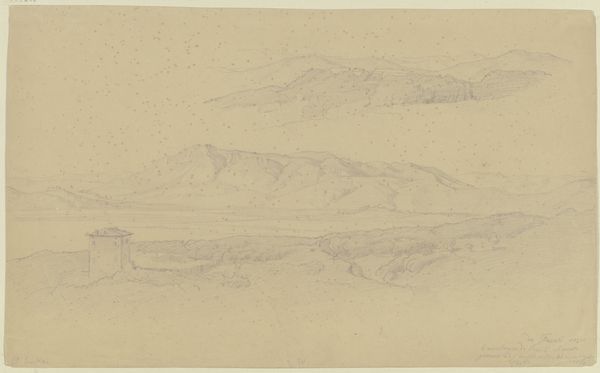
Copyright: Public Domain
This faint pencil drawing, “Capri” by Johannes Thomas, depicts a monumental rock formation rising out of the sea. These rocks carry a deep symbolic weight. Since antiquity, mountains have been regarded as places where the earthly and the divine intersect, and where deities are immanent, like Mount Olympus in ancient Greece. This symbolic association extends across cultures. In the Romantic era, to which Thomas belonged, mountains represented the sublime power of nature, a force capable of inspiring both awe and terror. Think of Caspar David Friedrich's "Wanderer above the Sea of Fog", where a lone figure contemplates the vast, misty landscape from a rocky peak. This motif isn't just about landscape, but about humanity's place in the cosmos. The sublime landscapes resonate with our collective memories and primal fears, reminding us of the overwhelming power of nature and the ephemeral nature of human existence. The mountain here is not static; it is a silent, enduring witness to the passage of time, a symbol of resilience, and a reminder of the profound interconnectedness between humanity and the natural world.
Comments
No comments
Be the first to comment and join the conversation on the ultimate creative platform.
